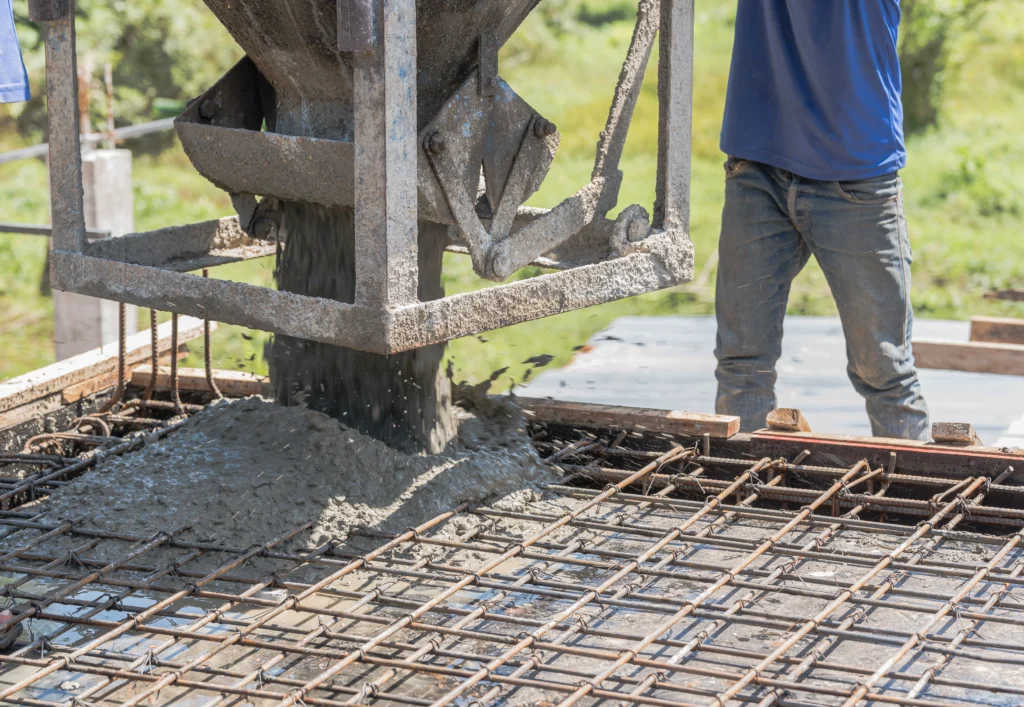Common mistakes in concrete installation include inadequate site preparation, incorrect mix proportions, insufficient curing, and improper finishing. These issues can lead to cracking, settling, and a weakened structure. Concrete is a versatile material known for its durability and cost-effectiveness. From minor cracks to major structural issues, Wrong installation can lead to a host of problems. Understanding the complexities involved in laying concrete can ensure sustainability and smart functionality.
How to Ensure a Flawless Concrete Pour: Avoiding Common Installation Blunders
Concrete is a versatile building material and can be used for driveways and patios, foundations, and entire buildings. Common blunders that can lead to concrete failure include poor site preparation, inadequate curing, ignoring mix proportions, and neglecting reinforcements. Improper finishing and rushing the job compromise quality and durability.
| Fast fact The latest research is focusing on reducing the environmental impact of concrete production through the use of alternative raw materials, waste recycling, and carbon capture technologies. |
Here is a detailed look at the common mistakes in concrete installation and how to prevent them.
1. Inadequate Site Preparation
Failing to properly clean the site of debris, organic matter, or inadequate compaction of the subgrade can result in uneven settling, cracking, and structural problems.
Solution
Evacuate the area thoroughly, and remove all organic material, ensuring the subgrade is well compacted and level before pouring.
2. Working With the Wrong Tools
Choosing the wrong application tools is a mistake many DIY enthusiasts make.
Solution
Whether you’re using an angle grinder or a circular saw, working with the wrong tools risks damaging both the tools and the concrete. The denser the concrete, the stronger your concrete cutting tools should be.
3. Wrong Cement Type
Using a cement grade that is inappropriate for the application can compromise the durability and outcome of your project.
Solution
Use the correct cement grade, based on factors like the intended use and the environmental factors.
4. Incorrect Mix Proportions
Adding too much water to the concrete mix can weaken it, leading to cracking and reduced durability.
Solution
Use the concrete mix proportions, as specified by the supplier, and ensure consistency in the mix.
| Did you know? Nano particles are being incorporated into concrete to enhance mechanical properties and durability by reducing porosity and increasing density. |
5. Insufficient Curing
Curing helps maintain moisture in the concrete and allows it to harden properly. If concrete dries out too quickly, it won’t reach its full strength and may crack.
Solution
Ensure proper curing by keeping the concrete moist (e.g., with wet burlap, plastic sheeting, or a curing compound) for the recommended time.
6. Improper Finishing
Overworking the concrete surface during finishing can weaken it and cause scaling (flaking).
Solution
Use appropriate finishing techniques to achieve a smooth, durable surface, without overworking the concrete.
7. Ignoring Safety Considerations
You can put your and others’ safety at risk by not taking into account proper safety precautions.
Solution
Consider wearing safety gear, safety glasses, a hard hat, steel-capped boots, heating protection, and high-visibility clothing.
8. Other Common Mistakes
- Ignoring weather conditions during the concrete installation process and working in extreme heat and cold can negatively impact the setting and curing process.
- Not using enough reinforcement, like rebar or wire mesh, can lead to cracking.
- Expansion joints are crucial for preventing cracking due to temperature changes and settling; ignoring them can be a serious blunder.
- Premature removal of forms can lead to concrete sagging or cracking.
- For complex projects, it’s best to hire a professional concrete contractor who understands the nuances of concrete work to ensure quality work.
- Skimping on time and effort to rush a project can lead to shortcuts that compromise the quality and durability.
Conclusion
Inadequate site preparation, incorrect concrete mix proportions, and insufficient curing are some of the key blunders in concrete installations. Following the industry’s standards and best practices for concrete installation helps create structures that last for decades. A properly installed concrete requires less maintenance and reduces the need for frequent repairs and replacements.
FAQs
What is the 4 2 1 rule for concrete?
This means four parts crushed stone, mixed with two parts of sand, and one part of cement with water, will provide the right consistency.
What are the benefits of concrete in the construction industry?
The benefits include cost effectiveness, it’s durable, hardens easily, temperature resistant, and requires low energy consumption during production.
What are the positive effects of concrete?
It doesn’t burn, therefore reducing both the waste of materials and the noxious emissions caused by fire.

